This website uses cookies so that we can provide you with the best user experience possible. Cookie information is stored in your browser and performs functions such as recognising you when you return to our website and helping our team to understand which sections of the website you find most interesting and useful.
Home Care In Cedar City, UT

They say that your golden years are the best years of your life. For most older Americans, that's how it should be - a time to relax, reflect, and live life in a familiar place. After all, senior citizens in the U.S. have worked tirelessly to build a better economy, serve their communities, and raise families.
However, as seniors grow older, completing daily tasks like showering and enjoying activities such as visiting The Old Mill in Cedar City, UT gets harder without someone by their side. Unfortunately, many older Americans aren't able to rely on their adult children for help. The reality in today's world is that family members do not have the skills or time to dedicate to caring for their parents. That's where Always Best Care Senior Services comes in.
Our in-home care services are for people who prefer to stay at home as they grow older but need ongoing care that family or friends cannot provide. More and more older adults prefer to live far away from long-term, institutionalized facilities and closer to the place where they feel most comfortable - their home. Home care in Cedar City, UT is a safe, effective way to give your loved ones the care they need when they need it the most.

 Home Care Services
Home Care Services
- Home Care in Cedar City, UT
- The Always Best Care Difference
- Types of In-home Care in Cedar City, UT
- Benefits of Home Care in Cedar City, UT
- Aging in Place: The Preferred Choice for Most Seniors
- Affordable Care Plans
- Compassionate Care. Trusted Caregivers
- Assisted Living Referral Services
- Taking the First Step with Always Best Care
 Service Areas
Service Areas
The Always Best Care Difference
Since 1996, Always Best Care has provided non-medical in-home care for seniors to help them maintain a healthy lifestyle as they get older. We are proud to have helped more than 25,000 seniors maintain higher levels of dignity and respect. We focus on providing seniors with the highest level of in-home care available so that they may live happily and independently.
Unlike some senior care companies, we genuinely want to be included in our clients' lives. We believe that personalized care is always the better option over a "one size fits all" approach. To make sure our senior clients receive the best care possible, we pair them with compassionate caregivers who understand their unique needs. That way, they may provide care accordingly without compromising their wellbeing.
The Always Best Care difference lies in life's little moments - where compassionate care and trustworthy experience come together to help seniors live a fruitful, healthy life. Whether you are an aging adult that can't quite keep up with life's daily tasks or the child of a senior who needs regular in-home services, Always Best Care is here to help.
“Best ever. Always very great service. Whitney is awesome.”
“Working for Always Best Care has been a wonderful experience. They genuinely care about”
“I've been a caregiver for ABC clients for just over 6 months. I absolutely love”
“Lea, Brent and the staff are great. Because I live in a different city, the”
“My experience with Always Best Care was hands down amazing! Their staff is super attentive”
“I cannot express enough how grateful I am for the exceptional care Siale provided for”
“Best ever. Always very great service. Whitney is awesome.”
“Working for Always Best Care has been a wonderful experience. They genuinely care about their clients and go above and beyond to make sure that the employees and the clients are valued and important. They are so great to focus on compassion, quality care, and teamwork.”
“I've been a caregiver for ABC clients for just over 6 months. I absolutely love what I do, I love all of the clients, I love the feedback I get from my team! I love my manager shelly!! she is so amazing with communication and so focused on how to help me succeed and grow with this company, and so attentive to our clients! I am so happy to be able to help our clients each day and have such an amazing team!”
“Lea, Brent and the staff are great. Because I live in a different city, the staff takes care of my father’s needs where he lives. Maria is wonderful with my dad. I’ve not personally met the staff, except Maria, but I’m very grateful for all they do for my dad and me. Appreciate them.”
“My experience with Always Best Care was hands down amazing! Their staff is super attentive and kind. I always felt like I was their first priority and that they really cared about me. 10/10 would recommend!!”
“I cannot express enough how grateful I am for the exceptional care Siale provided for my dad. He was committed to delivering the highest quality of care and truly valued my dad as a patient. Siale, he goes over and beyond to make a positive impact on the lives of his patients.”
What is Non-Medical Senior Care in Cedar City, UT?

Home is where the heart is. While that saying can sound a tad cliche, it is especially true for many seniors living in America. When given a choice, older adults most often prefer to grow older at home. An AARP study found that three out of four adults over the age of 50 want to stay in their homes and communities as they age.

When you begin to think about why, it makes sense. Home offers a sense of security, comfort, and familiarity.

The truth is, as we age, we begin to rely on others for help. When a family is too busy or lives too far away to fulfill this role, in-home senior care is often the best solution. Home care services allow seniors to enjoy personal independence while also receiving trustworthy assistance from a trained caregiver.

At Always Best Care, we offer a comprehensive range of home care services to help seniors stay healthy while they get the help they need to remain independent. As your senior loved one gets older, giving them the gift of senior care is one of the best ways to show your love, even if you live far away.

Types of Elderly Care in Cedar City, UT
To give our senior clients the best care possible, we offer a full spectrum of in-home care services:

Personal Care Services
If your senior loved one has specific care needs, our personal care services are a great choice to consider. Personal care includes the standard caregiving duties associated with companion care and includes help with tasks such as dressing and grooming. Personal care can also help individuals with chronic conditions like diabetes.
Common personal care services include assistance with:
- Eating
- Mobility Issues
- Incontinence
- Bathing
- Dressing
- Grooming


Home Helper Services
Sometimes, seniors need helpful reminders to maintain a high quality of life at home. If you or your senior has trouble with everyday tasks like cooking, our home helper services will be very beneficial.
Common home helper care services include assistance with:
- Medication Reminders
- Meal Preparation
- Pet Care
- Prescription Refills
- Morning Wake-Up
- Walking
- Reading


Companionship Services
Using this kind of care is a fantastic way to make life easier for you or your senior loved one. At Always Best Care, our talented caregivers often fill the role of a companion for seniors. That way, older adults can enjoy their favorite local activities, such as visiting Canyon Park, East Side in Cedar City, UT with friends while also receiving the care they need daily or weekly.
Common companionship services include:
- Grocery Shopping
- Transportation to Appointments
- Nutritional Assistance
- Conversation
- Planning Outings
- Completing Errands
- Transportation to Community
- Events and Social Outings


Respite Care Services
According to AARP, more than 53 million adults living in the U.S. provide care to someone over 50 years old. Unfortunately, these caregivers experience stress, exhaustion, and even depression. Our respite care services help family caregivers address urgent obligations, spend time with their children, and enjoy nearby activities. Perhaps more importantly, respite care gives family members time to recharge and regroup. Taking personal time to de-stress reduces the risk of caregiver burnout. So, if you've always wanted to eat at the local Lighthouse Seafood & Grill or visit Cedar Fort, don't feel bad. Doing so is great for both you and your loved one.
At the end of the day, our goal is to become a valuable part of your senior's daily routine. That way, we may help give them the highest quality of life possible. We know that staying at home is important for your loved one, and we are here to help make sure that is possible.
If you have been on the fence about non-medical home care, there has never been a better time than now to give your senior the care, assistance, and companionship they deserve.

Benefits of Home Care in Cedar City, UT
Always Best Care in-home services are for older adults who prefer to stay at home but need ongoing care that friends and family cannot provide. In-home care is a safe, effective way for seniors to age gracefully in a familiar place and live independent, non-institutionalized lives. The benefits of non-medical home care are numerous. Here are just a few reasons to consider senior care services from Always Best Care:
Always Best Care offers a full array of care options for patients at all levels of health. With our trusted elderly care services, your loved one will receive the level of care necessary for them to enjoy the highest possible quality of life.
Request More Information
Aging in Place: The Preferred Choice for Most Seniors
While it's true that some seniors have complicated medical needs that prevent them from staying at home, aging in place is often the best arrangement for seniors and their families. With a trusted caregiver, seniors have the opportunity to live with a sense of dignity and do so as they see fit - something that is unavailable to many older people today.
In-home care makes it possible for millions of seniors to age in place every year. Rather than moving to a strange nursing home, seniors have the chance to stay at home where they feel the happiest and most comfortable.
Here are just a few of the reasons why older men and women prefer to age at home:
How much does a senior's home truly mean to them?
A study published by the American Society on Aging found that more than half of seniors say their home's emotional value means more than how much their home is worth in monetary value. It stands to reason, then, that a senior's home is where they want to grow old.
With the help of elderly care in Cedar City, UT, seniors don't have to age in a sterilized care facility. Instead, they can age gracefully in the place they want to be most: their home. In contrast, seniors who move to a long-term care facility must adapt to new environments, new people, and new systems that the facility implements. At this stage in life, this kind of drastic change can be more harmful than helpful.
Institutional care facilities like nursing homes often put large groups of people together to live in one location. On any given day, dozens of staff members and caregivers run in and out of these facilities. Being around so many new people in a relatively small living environment can be dangerous for a seniors' health and wellbeing. When you consider that thousands of seniors passed away in nursing homes during the COVID-19 pandemic, opting for in-home care is often a safer, healthier choice for seniors.
Aging in place has been shown to improve seniors' quality of life, which helps boost physical health and also helps insulate them from viral and bacterial risks found in elderly living facilities.
For many seniors, the ability to live independently with assistance from a caregiver is a priceless option. With in-home care, seniors experience a higher level of independence and freedom - much more so than in other settings like a nursing home. When a senior has the chance to age in place, they get to live life on their own terms, inside the house that they helped make into a home. More independence means more control over their personal lives, too, which leads to increased levels of fulfillment, happiness, and personal gratification. Over time, these positive feelings can manifest into a healthier, longer life.
More independence, a healthier life, and increased comfort are only a few benefits of aging in place. You have to take into consideration the role of cost and convenience. Simply put, it's usually easier and more affordable to help seniors age in place than it is to move them into an institutional care facility. According to the US Department of Housing and Urban Development, seniors who age in the comfort of their homes can save thousands of dollars per month.
In-home care services from Always Best Care, for instance, are often less expensive than long-term solutions, which can cost upwards of six figures per year. To make matters worse, many residential care facilities are reluctant to accept long-term care insurance and other types of payment assistance.
With Always Best Care's home care services, seniors and their families have a greater level of control over their care plans. In-home care gives seniors the chance to form a bond with a trusted caregiver and also receive unmatched care that is catered to their needs. In long-term care facilities, seniors and their loved ones have much less control over their care plan and have less of a say in who provides their care.

Affordable Care
In-home care is a valuable resource that empowers seniors to age in place on their own terms. However, a big concern for many families and their loved ones is how much in-home care costs. If you're worried that in-home care is too expensive, you may be pleasantly surprised to learn that it is one of the most affordable senior care arrangements available.
Typically, hiring an Always Best Care in-home caregiver for a few hours a week is more affordable than sending your loved one to a long-term care facility. This is true even for seniors with more complex care needs.
At Always Best Care, we will work closely with you and your family to develop a Care Plan that not only meets your care needs, but your budget requirements, too. Once we discover the level of care that you or your senior need, we develop an in-home care plan that you can afford.
In addition to our flexible care options, families should also consider the following resources to help offset potential home care costs:

Compassionate Care. Trusted Caregivers.
When you or your senior loved one needs assistance managing daily tasks at home, finding a qualified caregiver can be challenging. It takes a special kind of person to provide reliable care for your senior loved one. However, a caregiver's role involves more than meal preparation and medication reminders. Many seniors rely on their caregivers for companionship, too.
Our companion care services give seniors the chance to socialize in a safe environment and engage in activities at home. These important efforts boost morale and provide much-needed relief from repetitive daily routines. A one-on-one, engaging conversation can sharpen seniors' minds and give them something in which to be excited.
At Always Best Care, we only hire care providers that we would trust to care for our own loved ones. Our senior caregivers in Cedar City, UT understand how important it is to listen and communicate with their seniors. A seemingly small interaction, like a short hug goodbye, can make a major difference in a senior's day. Instead of battling against feelings of isolation, seniors begin to look forward to seeing their caregiver each week.
Understanding the nuances of senior care is just one of the reasons why our care providers are so great at their job.
Unlike some senior care companies, our caregivers must undergo extensive training before they work for Always Best Care. In addition, our caregivers receive ongoing training throughout the year. This training ensures that their standard of care matches up to the high standards we've come to expect. During this training, they will brush up on their communication skills, safety awareness, and symptom spotting. That way, your loved one receives the highest level of non-medical home care from day one.
Assisted Living Referral Services
While it's true that many seniors prefer to age at home, sometimes in-home care isn't the best fit. For those seniors and their families, choosing an assisted living facility makes more sense. Unfortunately, finding the optimal care facility is easier said than done in today's day and age. That's when Always Best Care's assisted living referral services begin to make a lot of sense.
Assisted living is a form of housing intended for seniors who require varying degrees of medical and personal attention. Accommodations may include single rooms, apartments, or shared living arrangements. Assisted living communities are typically designed to resemble a home-like environment and are physically constructed to encourage the independence of residents.

At assisted living communities, seniors receive help with daily activities such as bathing, dressing, and eating. They may also benefit from coordination of services with outside healthcare providers, and monitoring of resident activities to ensure their health, safety, and well-being. Caregivers who work at assisted living communities can also provide medication administration and personal care services for older adults.
Other services offered within assisted living communities can include some or all of the following:
- Housekeeping
- Laundry
- Recreational Activities
- Social Outings
- Emergency Medical Response
- Medication Monitoring
- Family Visitation
- Personal Care

At Always Best Care, our representatives can match your senior's emotional, physical, and financial needs with viable assisted living communities nearby. Results are based on comparative data, so you can select the best choice for you or your loved one.
Always Best Care works closely with local senior living communities to gain valuable knowledge that we then use to help seniors and their loved ones make informed decisions. This information can include basic care and rent, resident availability, and services provided. Because Always Best Care is compensated by these communities, we provide senior living referral services at no extra cost to you.
Some of the most popular assisted living communities to consider in our area include the following:
- All Seasons Senior Living of Cedar City
- Our House Assisted Living of Cedar City
- Three Peaks Assisted Living
- Integrity House
- Stonehenge of Cedar City - Skilled Nursing & Rehabilitation
- Cedar Health and Rehabilitation

For many seniors, moving into a senior living community revolves around how and when they want to make a transition to more involved care. Some seniors are more proactive about transitioning to independent living. Others choose to remain home until their care needs or other requirements are satisfied. Remember - our staff is here to help. Contact our office today to learn more about assisted living communities and how we can find a facility that exceeds your expectations.

Taking the First Step with Always Best Care
The first step in getting quality in-home care starts with a personal consultation with an experienced Always Best Care Care Coordinator. This initial consultation is crucial for our team to learn more about you or your elderly loved one to discover the level of care required. Topics of this consultation typically include:
A discussion of your needs and how our trained caregivers can offer assistance in the most effective way

A draft of your care plan, which includes highly detailed notes and a framework for the care that you or your senior will receive

Discuss payment options and help coordinate billing with your insurance provider

Our caregivers are trained to spot changes that clients exhibit, like mental and physical decline. As your trusted senior care company, we will constantly assess and update your Care Plan to meet any new emotional, intellectual, physical, and emotional needs.
If you have never considered in-home care before, we understand that you and your family may have concerns about your Care Plan and its Care Coordinator. To help give you peace of mind, know that every team member and caregiver must undergo comprehensive training before being assigned to a Care Plan.
At the end of the day, we only hire the best of the best at Always Best Care. Whether you need home care in Cedar City, UT 24-hours a day or only need a respite for a couple of hours, we are here to serve you.
When you're ready, we encourage you to contact your local Always Best Care representative to set up a Care Consultation. Our Care Coordinators would be happy to meet with you in person to get to know you better, discuss your needs, and help put together a personalized Care Plan specific to your needs.

Latest News in Cedar City, UT
Ongoing government shutdown may cause turbulence for smaller Utah airports
Amy Nayhttps://www.fox13now.com/news/local-news/southern-utah/ongoing-government-shutdown-may-cause-turbulence-for-smaller-utah-airports
Play/PauseMute/Unmute Embed videoPlayback SpeedVideo QualityEmbed videoCopy the code below to embed the video. CopyPlayback Speed 2 1.75 1.50 1.25 Normal 0.50Video Quality Play/Pause >>Mute/Unmute 0:00 / 0:00Settings Closed Captions Picture in Picture Cast FullscreenPlay/Pause >>Mute/Unmute 0:00 / 0:00Settings Closed Captions Cast FullscreenCEDAR CITY, Utah &mdash...
Play/Pause
Mute/Unmute
Embed video
Playback Speed
Video Quality
Embed video
Copy the code below to embed the video.
Copy
Playback Speed
2
1.75
1.50
1.25
Normal
0.50
Video Quality
Play/Pause >>
Mute/Unmute
0:00 / 0:00
Settings Closed Captions Picture in Picture Cast Fullscreen
Play/Pause >>
Mute/Unmute
0:00 / 0:00
Settings Closed Captions Cast Fullscreen
CEDAR CITY, Utah — As the , a new impact may affect travel out of Utah's rural airports, as funding that helps subsidize airlines flying out of smaller areas could end this weekend.
If the shutdown continues past Sunday, funding for the Essential Air Service (EAS) will come to a halt, and airports in Moab, Vernal and Cedar City could see turbulence. The EAS is a government program that funds carriers to continue flying out of rural airports despite the routes being unprofitable.
With the deadline quickly approaching, Canyonlands Airport Director Steve Gleason took immediate action during a Monday board meeting, assuring officials that flights will still be able to utilize the airport during one of its busiest months.
"We’re going to keep those flights going no matter what," Gleason said.
Because Grand County and the airlines share the financial risk if Canyonlands Airport is shuttered, Gleason said the flights are too crucial to the area’s economy to be grounded.
"You can track visitors to Moab, and you can track all the transient room tax and revenues to the city and county. It really follows our enplanements really well," he explained. "So when our enplanements are down, all of those things are down. When they’re up, those things are up. It really connects us to the rest of the world.
Here's where Utah employees impacted by government shutdown should turn:
Play/Pause
Mute/Unmute
Embed video
Playback Speed
Video Quality
Embed video
Copy the code below to embed the video.
Copy
Playback Speed
2
1.75
1.50
1.25
Normal
0.50
Video Quality
Play/Pause >>
Mute/Unmute
0:00 / 0:00
Settings Closed Captions Picture in Picture Cast Fullscreen
Play/Pause >>
Mute/Unmute
0:00 / 0:00
Settings Closed Captions Cast Fullscreen
Contour Airlines operates daily flights to Denver and Phoenix from the Moab airport. Those flights often fail to turn a profit and are subsidized by the county and, in turn, the federal government. In larger regional airports like Cedar City, that subsidy goes directly to the airlines, such as SkyWest, which operates daily connecting flights to larger destinations.
"[The flights help] support that hub and spoke system that a lot of these airports have, so in a sense, Salt Lake International, we are a spoke to that hub, so our community can access the whole airline market of the U.S. So it just helps so we can connect," said Cedar City Regional Airport Director Tyler Galetka.
Galetka warned that an EAS funding pause due to the government shutdown could translate into delays and even cancellations in southern Utah.
"It’s really the determination of the airline if they wish to continue flying in and out of Cedar City," he said. "They’re flying 100% at risk."
Any disruption could mean SkyWest's 12 weekly flights could be dramatically scaled back.
"We’re hopeful that we could find some sort of solution," Galatka shared.
Hundreds of miles from the ocean, iconic Cedar City lighthouse set for demolition
Chris Reedhttps://www.fox13now.com/news/local-news/southern-utah/hundreds-of-miles-from-the-ocean-iconic-cedar-city-lighthouse-set-for-demolition
and last updated 9:35 AM, Sep 26, 2025CEDAR CITY, Utah — A lighthouse that has become an iconic landmark in Cedar City is facing demolition as the Utah Department of Transportation moves forward with plans to expand a major interstate interchange.Standing 88-feet tall, the Cedar City Lighthouse is located 350 miles from the nearest ocean, but sits directly in the path of UDOT's planned expansion of the Exit 57 interchange on Interstate 15. The project aims to address growing traffic congestion in one of Utah's fastest-gro...
and last updated 9:35 AM, Sep 26, 2025
CEDAR CITY, Utah — A lighthouse that has become an iconic landmark in Cedar City is facing demolition as the Utah Department of Transportation moves forward with plans to expand a major interstate interchange.
Standing 88-feet tall, the Cedar City Lighthouse is located 350 miles from the nearest ocean, but sits directly in the path of UDOT's planned expansion of the Exit 57 interchange on Interstate 15. The project aims to address growing traffic congestion in one of Utah's fastest-growing regions.
Laurie Scholzen, co-owner of the lighthouse and the adjoining Cedar City Children's Dental, learned about the eminent domain proceedings only last fall, despite the project being announced in 2023.
"So we received a phone call about a year ago just saying that UDOT would like to meet with you regarding an eminent domain case in acquiring your property, and so we sat down and we met with them, and that was where we learned about it," Scholzen said.
Scholzen and her husband purchased the lighthouse in 2010 from its original owner, Tom Pugh, who built the structure in 2000 when the area was largely undeveloped. The lighthouse was designed to attract visitors to the southern part of Cedar City, a goal that proved successful as the area experienced significant growth.
"It really was supposed to be a way to bring people to the south part of Cedar City, and it really worked, which is why we're facing an eminent domain for having you to tear it down because there's so much growth," Scholzen said.
Zion National Park considers reservation system to deal with growing crowds:
UDOT acknowledges the difficulty of the situation but emphasizes the safety concerns driving the expansion.
"No one can deny that it is a hot spot for growth in the state right now," said Devin Squire, UDOT's project manager for the Cedar City South Interchange. "A big driver here is keeping queues off of I-15, which becomes a huge safety issue."
The lighthouse, built brick-by-brick on site, features runway lights at the top that shine out at night. Scholzen offers weekend tours for a fee, with visitors climbing about 90 steps to reach the top of the structure.
While UDOT recognizes the lighthouse's iconic status, Squire noted it is not designated as a historical landmark due to its relatively recent construction in 2000.
"In our current design, right, there is no way that we can protect that lighthouse where it currently is," Squire said. "I do sympathize with people that like it. One of our engineers proposed to his wife at the lighthouse. So I understand the sentimental value there."
Cedar City officials indicated the matter falls under UDOT jurisdiction and involves private property, limiting the city's ability to intervene.
Public reaction to the potential demolition has been mixed, with some residents viewing the lighthouse as an unnecessary novelty while others consider it a beloved landmark.
"I've been coming up here for the past 15 years to Cedar City before we moved here. And every time we see the lighthouse, it's just really iconic," said Cedar City resident Mike Amerson. "It's a part of Cedar City now to me."
Scholzen expressed concerns about the compensation process, noting the difference between market value and replacement costs for such a unique property.
"There's a lot on paper that looks really great, that eminent domain will compensate you," she said. "Market value is very different than replacement value. It's just one of those landmarks that is irreplaceable."
Cozy up to Cedar City: A guide to fall fun and adventure
ksl.comhttps://www.ksl.com/article/51372018/cozy-up-to-cedar-city-a-guide-to-fall-fun-and-adventure
Estimated read time: 5-6 minutesThere's something special about fall in Cedar CityTucked in the heart of southern Utah, the charming town really shines in autumn when temperatures drop but adventures still abound.Bursts of yellow, orange, and red light up the nearby canyons while harvest festivals and theater performances bring Cedar City to life.It's the kind of place where you can spend the morning hiking amongst red rock vistas and the evening enjoying world-class theater under the stars.Cedar City also ...
Estimated read time: 5-6 minutes
There's something special about fall in Cedar City
Tucked in the heart of southern Utah, the charming town really shines in autumn when temperatures drop but adventures still abound.
Bursts of yellow, orange, and red light up the nearby canyons while harvest festivals and theater performances bring Cedar City to life.
It's the kind of place where you can spend the morning hiking amongst red rock vistas and the evening enjoying world-class theater under the stars.
Cedar City also serves as a gateway to some of Utah's most spectacular landscapes—Zion and Bryce Canyon National Parks, Brian Head, and Cedar Breaks.
Whether you're seeking outdoor thrills, enlightening entertainment, or just a cozy weekend getaway, Cedar City has it all.
This guide will help you discover the area's best activities and help you make the most of your colorful fall escape.
Scenic outdoor adventures
Even if you'd classify yourself as the "indoorsy" type, you'll want to try something outdoorsy when Southern Utah is showing off its scenery in the fall.
There are lots of options to choose from, whether you're into hiking, biking, or just enjoying the views.
At Cedar Breaks National Monument, stand in awe at the edge of a panoramic natural amphitheater.
From the scenic overlook, visitors can spot arches, hoodoos, and other interesting rock formations in brilliant shades of orange, pink, and red. Trails like the South Rim trail or Alpine Pond trail let you explore other features of the majestic national monument.
Just north of Cedar City, the ancient Fremont people left their mark on the weathered sandstone. Look (but don't touch) at the Parowan Gap petroglyphs as you admire ancient art and imagine yourself in the same spot as travelers long ago.
Head to Brian Head Resort for a day of lift-serviced downhill mountain biking. The resort's scenic and well-maintained trails are the perfect place for adrenaline junkies to get their fill of downhill speed until ski season comes around.
Fall festivals and family fun
The Utah Shakespeare Festival should be at the top of your bucket list when visiting Cedar City. People come from all over the country for this world-class celebration of The Bard and his enduring works.
While you can't see "Shakespeare Beneath the Stars" right now because the outdoor theatre is closed, you can see "Steel Magnolias" and "The Importance of Being Earnest' in the gilded Randall L. Jones Theater.
And while you are there, make sure and visit the Character Garden as walking beneath the stars at this location is quite magical.
You'll find pumpkin patches aplenty in the Cedar City area.
Visit smaller local operations like Robinson Family Pumpkin Patch and Judd Pumpkin Patch for a more personal picking experience with homemade treats. Or visit Nature Hills Farm for the Harvest Fest, where little ones will love the train ride and cute farm animal encounters.
To continue your agricultural foray, stop by the Cedar City Farmer's Market, Saturday mornings from 9-1, the Festival City's Farmer's Market at various times, depending on the date, or the Midvalley Farmer's Market in Enoch on Wednesday afternoons.
Visit Cedar City has a great list of all the fall pumpkin patches, farms, and markets you can make memories at, so check out the list here.
Beer enthusiasts (or just Bavarian enthusiasts) won't want to miss Oktoberfest at Brian Head! Every weekend in September the resort brings the spirit of the Alps to Utah with live music, local brews, and activities for the whole family.
Local favorites: Food and art
With Cedar City's reputation for arts and culture, two must-visit stops are the Southern Utah Museum of Art (SUMA) and the Frontier Homestead State Park Museum.
SUMA showcases stunning contemporary works and regional landscapes by local artists, all housed in a sleek building that feels like a piece of art itself.
Just across town, the Frontier Homestead Museum offers a completely different experience, immersing visitors in Utah's pioneer past.
You can try your hand at panning for gold or making rope and admire the historic structures and antique wagons.
The local food scene is bustling, so fuel your fall adventures with local eats like coffee and brunch at the Bristlecone Cafe, delicious pizza at Centro Woodfired Pizzeria, hearty barbecue at Porkbelly's or Fire + Smoke. Make sure to sample a Utah favorite—Navajo tacos—which can be found at Hermie's Drive In, among other places.
The best time to visit is right now
It's time to acknowledge the secret: Fall truly is the best time to visit Southern Utah.
The summer crowds have thinned, leaving trails and viewpoints quiet.
Cooler temperatures make hiking and exploring more comfortable, whether you're wandering Cedar Breaks' golden aspen groves or biking down Brian Head's slopes.
The mix of alpine foliage and red rock scenery creates a magical atmosphere, and Cedar City's fall festivals, cozy cafés, and welcoming vibe make it the perfect hub for both adventure and relaxation.
If all you want to do is drive, that's fine too—scenic byways in the area earned a designation as one of the top eight unique destinations to view fall colors by NBC's Today Show!
Check Cedar City's fall color report here for the latest updates on color changes.
With so many options to put on your trip itinerary, from a Shakespeare play or musical to a hike in nearby Zion National Park, there's no time like the present to plan your fall trip to Cedar City. Discover a hidden gem packed with the arts, outdoors, and autumn fun, all without the big crowds or price tag. For more ideas, check out visitcedarcity.com.
More stories you may be interested in
Disclaimer:


 385-444-7026
385-444-7026





